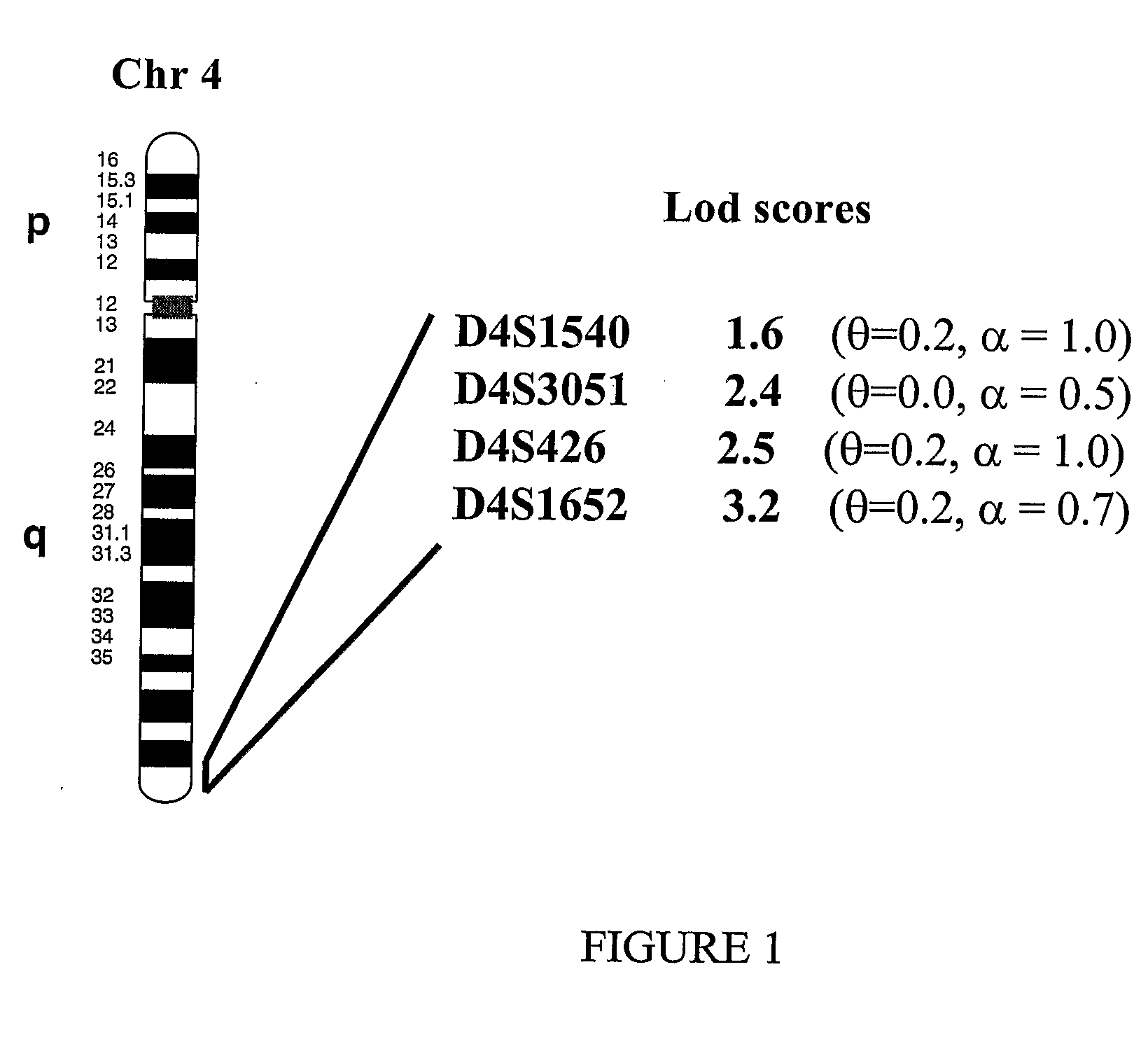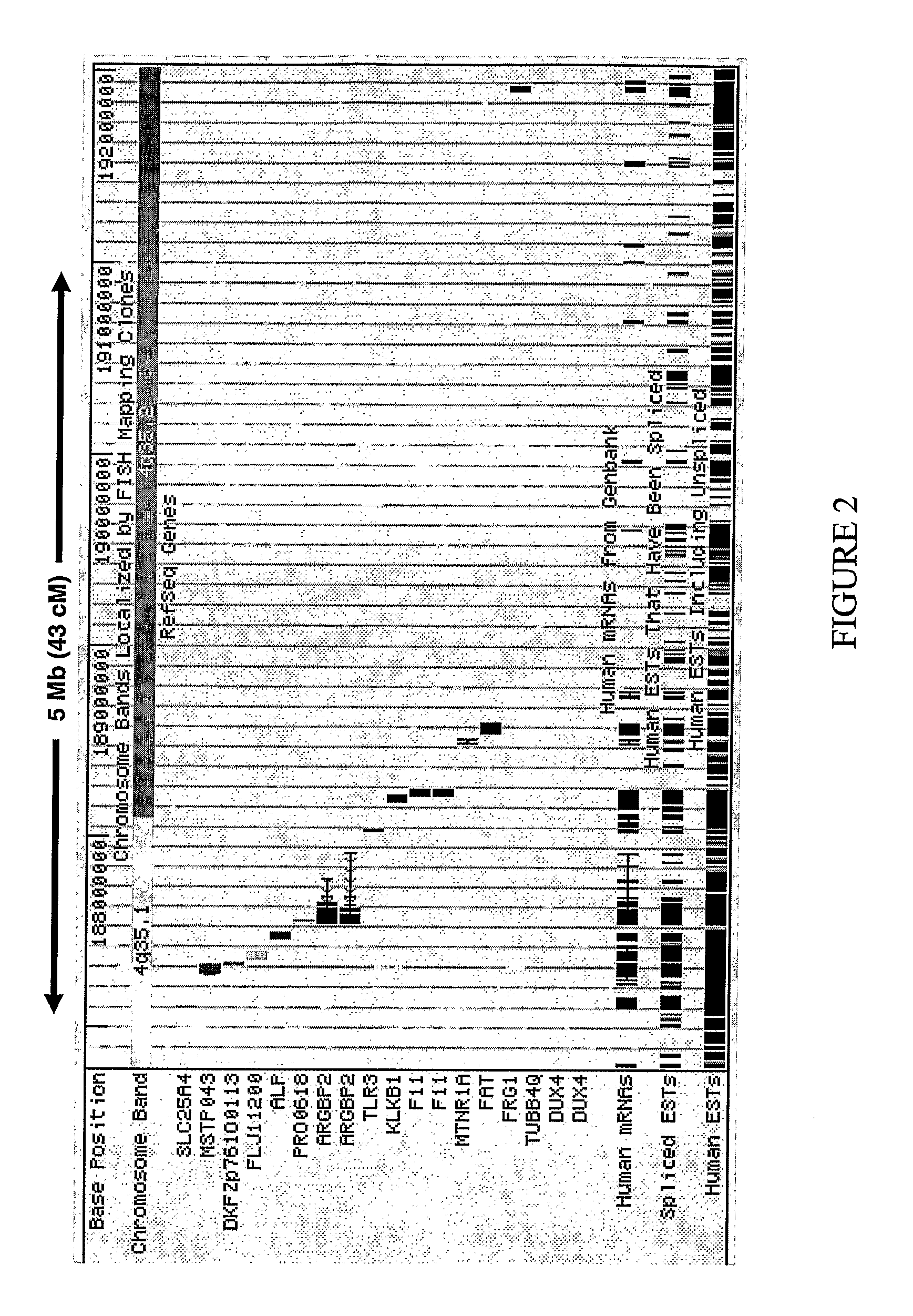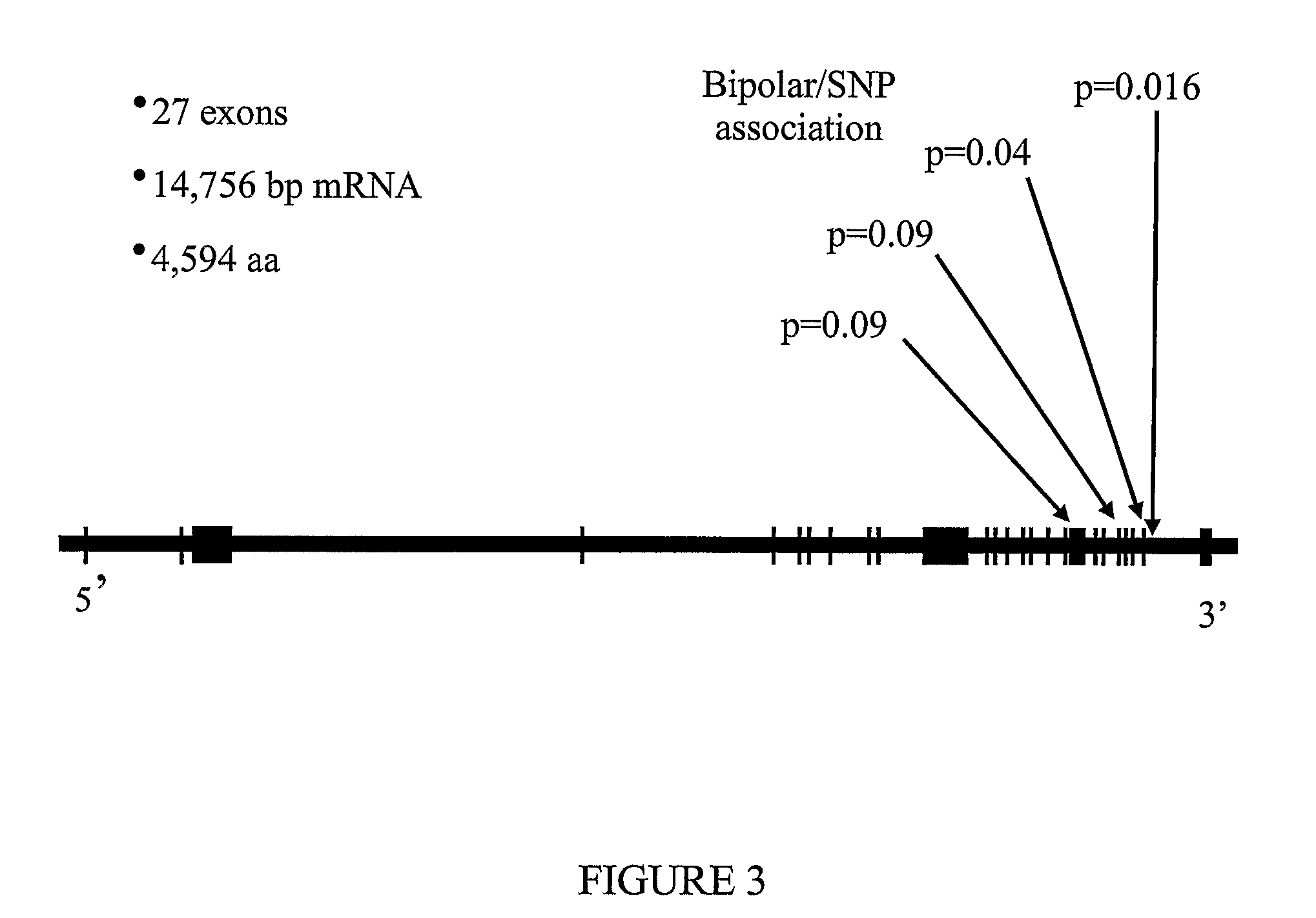Assay For Bipolar Affective Disorder
a bipolar affective disorder and assay technology, applied in the field of assays for bipolar affective disorder, can solve the problems of inability to accurately diagnose bipolar affective disorder, long time-consuming and laborious, and inability to accurately detect bipolar affective disorder
- Summary
- Abstract
- Description
- Claims
- Application Information
AI Technical Summary
Benefits of technology
Problems solved by technology
Method used
Image
Examples
example 1
Mapping a Bipolar Affective Disorder Locus to Map Position 4q35.2 of the Human Genome
1.1 Samples
[0449] The families used in the present study were ascertained as part of an ongoing bipolar genetics study via the Mood Disorders Unit, Prince of Wales Hospital / School of Psychiatry, University of New South Wales, Sydney, Australia. Medium to large multigenerational pedigrees with illness over at least two generations and containing a minimum of three affected individuals, at least two of whom were diagnosed with bipolar I (BPI), were recruited. Families were almost entirely of British or Irish descent. The families were assessed using the Diagnostic Interview for Genetic Studies (DIGS) (Numberger et al. Arch. Gen. Psychiatry, 51: 849-859, 1994), with interviews being undertaken by experienced psychologists and psychiatric nurses trained in this instrument. Best-estimate Research Diagnostic Criteria diagnoses were made by senior psychiatrists after independent evaluation of DIGS inter...
example 2
SNP Analysis of Genes in the Susceptibility Locus on Chromosome 4q35
[0459] Following identification of the region of 4q35 of the human genome that is linked with bipolar affective disorder, SNPs located within this region and, in particular, SNPs located within the human FAT gene were analysed for an association with a bipolar affective diroder based upon a case-control study design. These were screened in an affected individual (case) and their spouse (control) from the seven bipolar kindreds previously reported by Badenhop et al. Am. J. Med. Genet. 117B: 23-32 2003 as showing evidence for linkage to the chromosome 4q35 locus using the methods described below.
2.1 SNP Detection by Direct Sequencing Following PCR Amplification
[0460] Oligonucleotide primers were designed from genomic DNA sequence to amplify and sequence coding regions of the FAT gene, as well as flanking intronic sequences.
[0461] The sequence of the oligonucleotides are listed in Table 1:
TABLE 1Nucleotide seque...
example 3
Analysis SNPs in the FAT Gene are Associated with Bipolar Affective Disorder in a Number of Populations
[0475] Using the methods described in Example 2 the association of several SNPs with bipolar affective disorder was assessed in independently ascertained bipolar disorder cohorts. These cohorts included (i) 333 New Zealand cases and controls (173 case, 160 controls), (ii) 1348 UK cases and controls (669 cases, 679 controls), (iii) 90 UK parent-proband trios, and (iv) 173 Bulgarian parent-proband trios. Given the high LD between putatively associated SNPs observed in the Australian case-control cohort, three representative tagSNPs were selected for analysis among subsequent cohorts (Table 4). In addition to total cohort analysis, association was also tested for the presence or absence of a known family history of psychiatric illness (in first or second degree relative), and for the presence or absence of psychosis.
[0476] Statistically significant evidence for association with bipo...
PUM
| Property | Measurement | Unit |
|---|---|---|
| Fraction | aaaaa | aaaaa |
| Time | aaaaa | aaaaa |
| Disorder | aaaaa | aaaaa |
Abstract
Description
Claims
Application Information
 Login to View More
Login to View More - R&D
- Intellectual Property
- Life Sciences
- Materials
- Tech Scout
- Unparalleled Data Quality
- Higher Quality Content
- 60% Fewer Hallucinations
Browse by: Latest US Patents, China's latest patents, Technical Efficacy Thesaurus, Application Domain, Technology Topic, Popular Technical Reports.
© 2025 PatSnap. All rights reserved.Legal|Privacy policy|Modern Slavery Act Transparency Statement|Sitemap|About US| Contact US: help@patsnap.com



